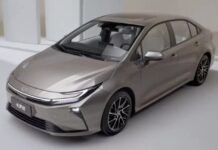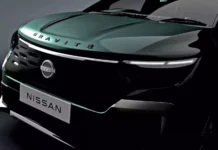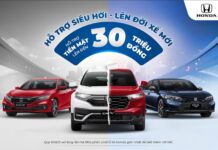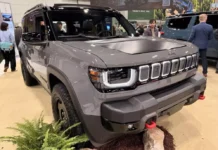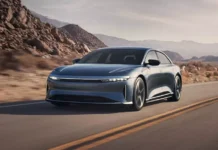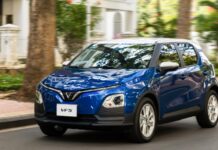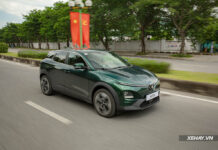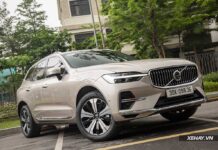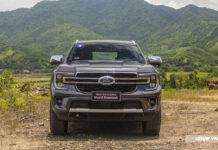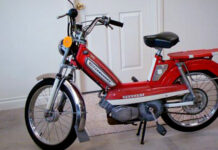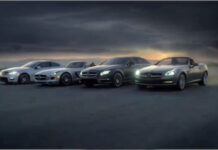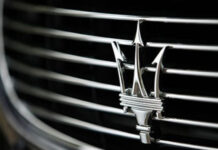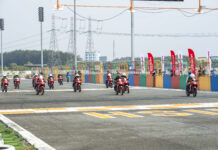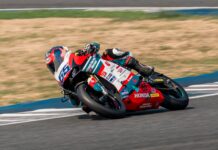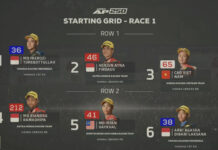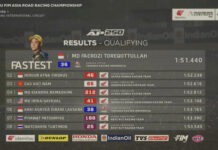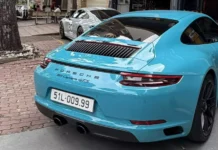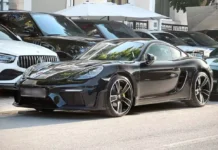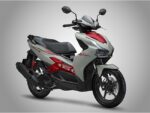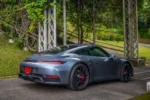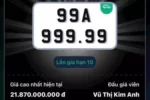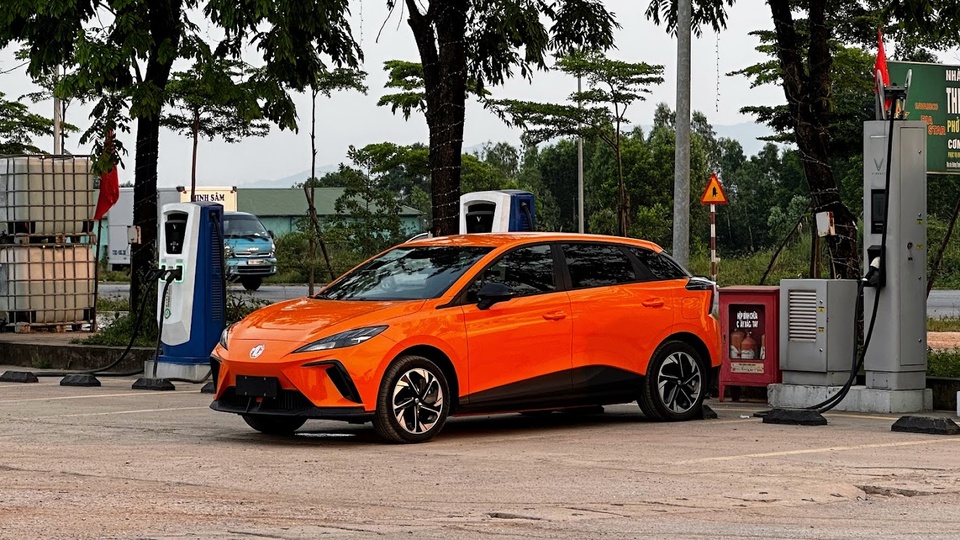 |
In Vietnam, it’s undeniable that the electric vehicle market is dominated by
VinFast . However, there are alternative options available. While
VinFast electric cars are prevalent and long-distance journeys using domestic
electric vehicles are no longer novel to the automotive community, experiences
of traveling with Chinese-branded electric vehicles are less common.
Below is a cross-country journey in an MG 4 EV driven by Mr. Bach Thanh Trung.
Mr. Trung is an administrator of the VOZ technology forum, owns several electric
vehicles, including VinFast, and has extensive experience in cross-country and
long-distance travel using electric cars.
Seeking Novelty and Attracted by Competitive Pricing
“I’ve driven various electric vehicles, especially VinFast pure electric cars.
Since the first days of their release, I’ve purchased and taken them on numerous
trips. After over two years of driving, I became quite familiar with electric
vehicles and desired to explore other options.
Recently, there has been an influx of Chinese electric cars imported into
Vietnam, so I thought it was the perfect time to test-drive a new brand along
Vietnam’s routes. I wanted to see how these cars from the world’s most populous
country would perform in terms of weather, climate, and Vietnamese roads,
compared to the rave international reviews they’ve received.” – Mr. Trung shared.
| |
|
MG 4 EV. Photo by Phuc Hau. |
In fact, as soon as the MG 4 EV was introduced in Vietnam, I began researching
and quite liked its design. While the world is embracing the trend of electric
SUVs, MG has offered a hatchback in the B-segment. Fortunately, this is the
type of car I adore.
However, at that time, the price exceeded 900 million VND, which wasn’t
convincing enough for me to consider a purchase. When the MG 4 EV was offered at
a promotional price of around 650 million VND, I decided to make the investment.
I took delivery of the car at the MG dealership in Bac Giang province and
commenced my journey early in the morning with a friend.
Nearly Ten Charges and Memorable Detours
According to the plan, we would start our journey from Bac Giang, heading to
Hanoi for the first charge. At the beginning of the trip, the car was fully
charged, and no obstacles occurred.
With my experience charging VinFast electric vehicles, I anticipated that
using a non-VinFast electric car would be much more challenging in finding
charging stations. Therefore, I planned to charge the car at locations with
available charging facilities before embarking on the journey.
However, upon reaching Long Bien, Hanoi, the charging stations indicated on
the map were inaccessible. One station belonged to another car brand and did
not share its facilities with external customers, while the other was
non-operational for unknown reasons.
After a few minutes of searching, I finally found a place to charge for
the first time, preparing to continue our journey.
| |
|
Not all charging stations are accessible. Photo by NVCC. |
We proceeded to Hue, intending to stay there for the night. To conserve
enough battery power for the next destination, Danang, I chose to charge the car
at two different locations in Hue. However, difficulties in finding charging
stations persisted.
At the second charge, I stopped at a Chinese electric car
dealership in Vinh, Nghe An. During the waiting time, the staff there was
somewhat suspicious, checking if I was an employee of another company seeking
to “charge for free.”
They candidly shared that while they are willing to share their charging
infrastructure with users, the brand prioritizes its customers and aims to
prevent instances of free charging by employees of other car companies.
We continued our third charge overnight at a station near
our accommodation. However, the next morning, I discovered that the car had
unexpectedly stopped charging at one o’clock in the morning. At this point, the
car had only 19% battery remaining.
| |
|
The charging station was operational but covered, causing confusion |
As we moved toward Danang, I spent over an hour searching for a place to
charge for the fourth time. The journey continued to Tuy Hoa, where we
charged for the fifth time before checking into a hotel.
Unfortunately, the car stopped charging overnight again, reaching only 49%
after eight hours.
Due to insufficient battery, we made an unscheduled stop at a private charging
station in Phu Yen before reaching Phan Rang, marking our sixth
charge. In Phan Rang, the MG4 EV underwent its seventh
charge at another private station but encountered a power outage.
Before entering the Phan Rang – Ho Chi Minh City highway, we performed the
final charge. After more than 30 minutes, the battery
reached 50%, sufficient to reach Ho Chi Minh City.
Overcoming Countless Challenges
This 2,000-kilometer journey also revealed the strengths of the MG 4 EV. The
car is relatively lightweight (compared to other electric vehicles), making it
agile on the roads.
SAIC, MG’s parent company, is not a prominent brand in pure electric
vehicles, so they haven’t developed multiple platforms for different segments.
Consequently, the MG 4 EV, despite being an affordable car, shares the same
platform as their sports car, the Cyberster.
As a result, it possesses advantages that other cars in the same class
cannot offer, such as rear-wheel drive, a perfectly balanced 50:50 weight
distribution, and a sports-oriented suspension configuration.
The MG 4 EV delivers a “thrilling” driving experience while remaining
lightweight, agile, and stable, providing a sense of security for the driver.
| |
|
MG 4 EV. |
The manufacturer has fine-tuned the MG 4 EV’s powertrain, deviating from the
trend of smooth and gentle performance common among its domestic counterparts.
The torque builds up rapidly, and the regenerative braking is robust enough to
make the driver “lean forward.” Additionally, the car’s battery range surpasses
the advertised figures.
However, a drawback is the lack of a smooth and comfortable ride at all speed
ranges. At slightly lower or higher speeds, occupants may experience discomfort
if the road surface is uneven.
Overall, the MG 4 EV caters to those who favor an extreme sports-oriented
driving experience, thrilling the driver but perhaps less ideal for family use.
The car’s quality is not disappointing, but the most significant “obstacle” of
the journey was locating charging stations.
Charging stations operated by MG dealerships or other Chinese car brands are
often located in city centers, which isn’t convenient for long-distance
travelers like us.
Currently, the charging station maps of third-party companies and Chinese
car dealerships are compiled from user contributions, lacking an official
supporting application. Consequently, the maps may not be promptly updated with
the latest status of the charging stations, making the journey more
challenging.
| |
|
Eight apps were used for charging during the cross-country journey |
The stations operated by third-party companies are also quite scarce and
occasionally installed to serve specific customer segments. For instance, when
approaching the Phan Rang highway exit, the map indicated a charging station,
but I couldn’t use it as it was intended for internal customers only.
To charge the car, users need to access an application, scan the payment code
on the charging station, and make the payment. As there are various private
charging companies, I had to download 7-8 different apps to facilitate
payments.
The cost for each charge was approximately 8,000 VND/kWh, totaling around 1.5
million VND for the entire 2,000-kilometer journey.
I felt comfortable and excited throughout this journey. As an adventure
enthusiast, driving the MG 4 EV provided me with unforgettable experiences.
However, if I were an ordinary customer, I might not have tolerated running
around to find charging stations.
The story of the MG 4 EV could be just a small snapshot of Vietnam’s electric
vehicle market. In reality, Chinese electric cars are entirely capable of
long-distance travel, but the infrastructure remains a significant hurdle to
overcome.
As the charging network becomes more comprehensive, cross-country trips in
electric vehicles will hopefully become less “arduous,” and the feeling of
traversing each route will be more fulfilling.
Recommended Reads for Your Journey
The Automotive category presents a selection of captivating books with
diverse themes. During those moments of rest and relaxation on your
journeys, books can be delightful companions.
Porsche Hikes Prices in the US
Porsche has announced a price adjustment for its entire range of vehicles in the US market, with an increase of 2.4% to 3.6%. This strategic move by Porsche is sure to capture the attention of automotive enthusiasts and collectors alike. With this adjustment, Porsche underscores its commitment to delivering unparalleled performance, luxury, and an exclusive driving experience.
The Lamborghini Aventador SVJ Roadster: A Multi-Billion Dong Sensation Spotted at a Sidewalk Chicken Rice Stall in Phu Yen
“A humble sidewalk chicken rice stall in Phu Yen Ward, Dak Lak Province, became the talk of the town when a rare Lamborghini Aventador SVJ Roadster rolled up. With only 800 of these supercars worldwide, it was an unexpected sight for patrons, who were treated to a double dose of luxury: a exquisite meal and a glimpse of automotive excellence.”

